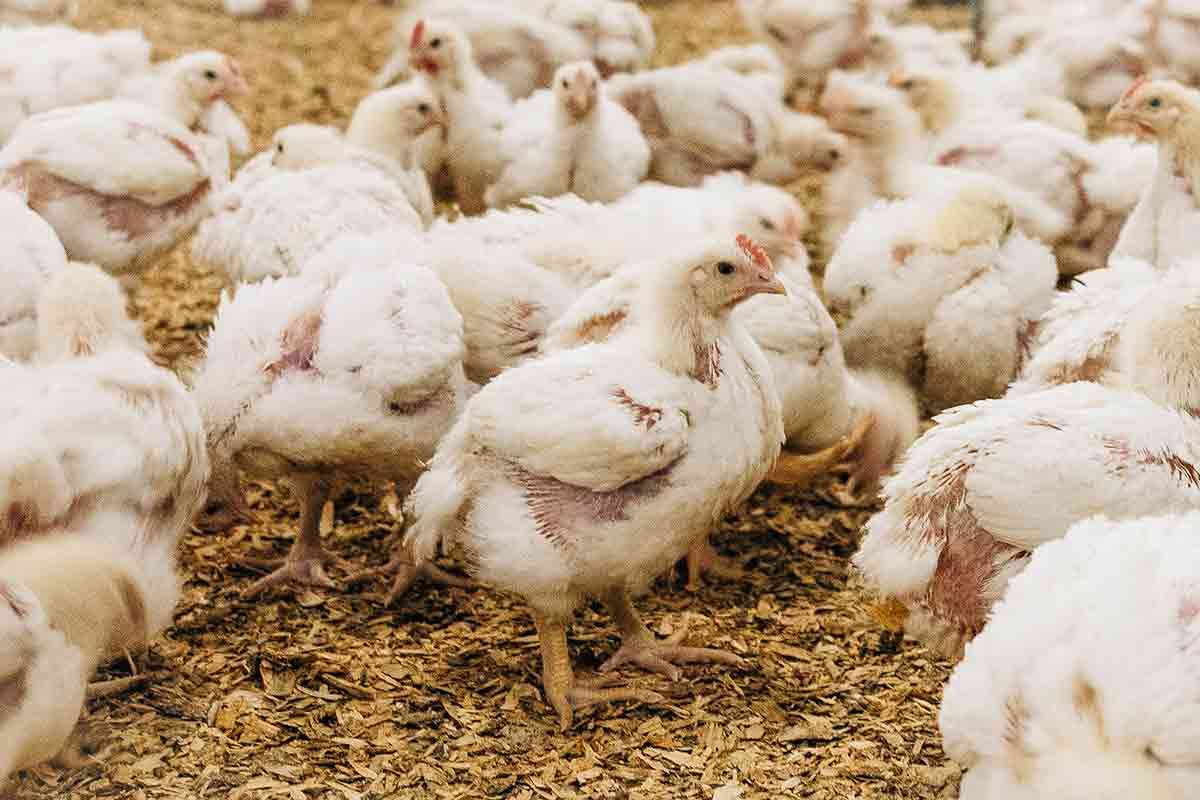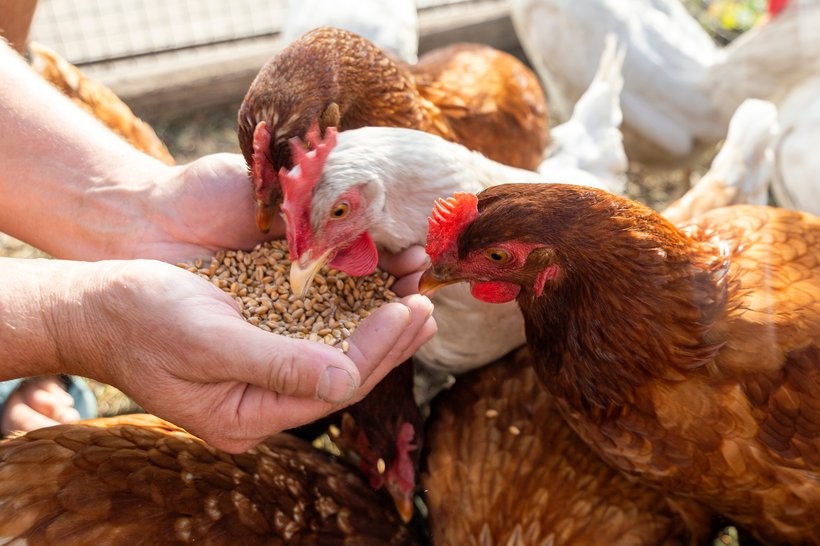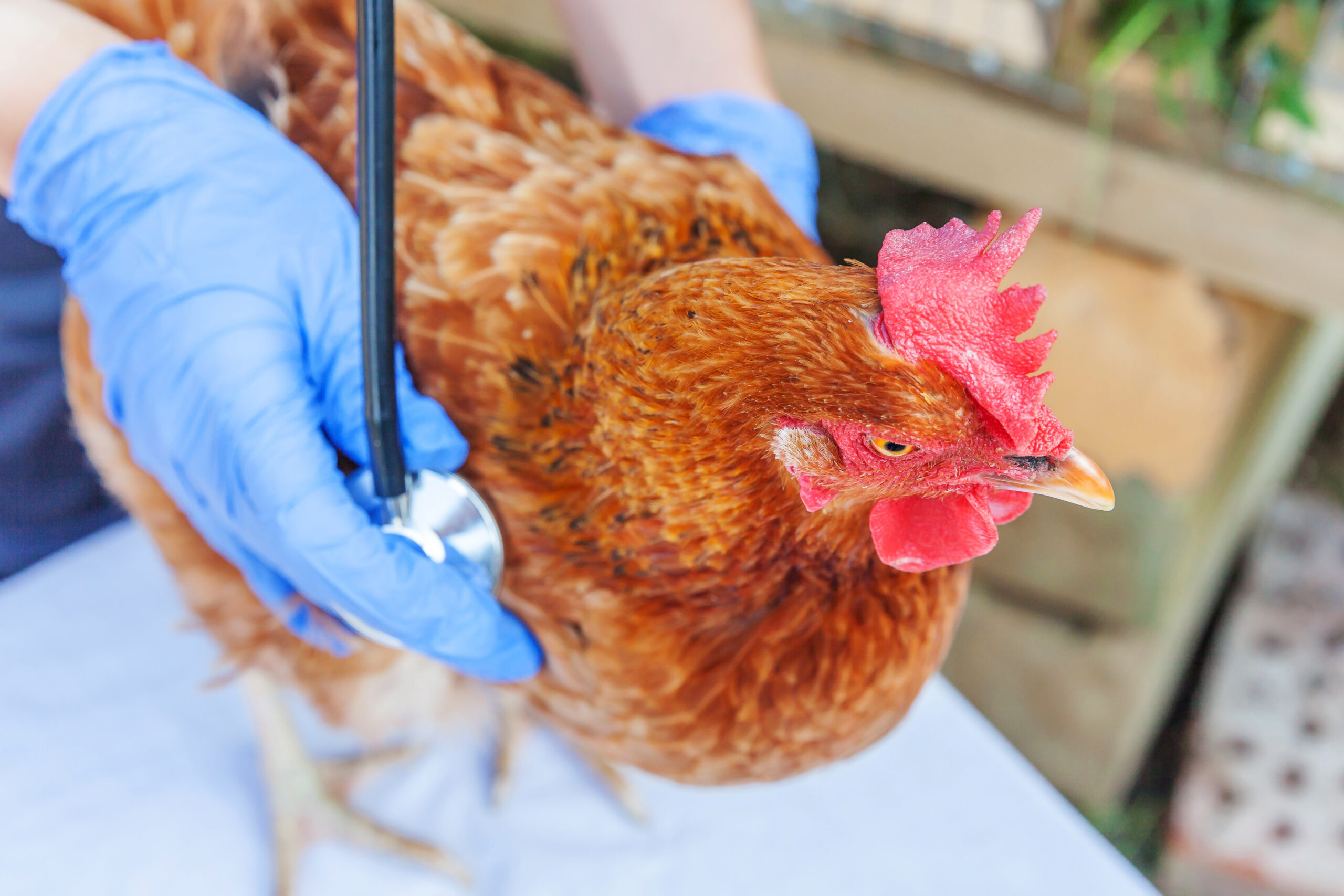The Division is involved in conducting basic, applied and adaptive research in the areas of Avian Genetics & Breeding and Avian Biotechnology. Main thrust areas include genetic improvement of diversified poultry species, maintenance, evaluation and utilization of native chicken, development and multiplication of superior germplasm, genomics and functional genetics analyses, rCytokine production and application of gene driven technologies like transgenesis and RNAi, etc.
Development of highly skilled and trained manpower and imparting specialized training and post-graduate education in the area of Avian Genetics and Breeding constitute an important mandate of this Division. The Division also provides assistance in training programmes organized by Post Graduate Education & Training and/ or Technology Transfer sections, consultancy services to farmers and various organizations, transfer of proven technologies to end users and supply of superior germplasm in the form of fertile eggs and day old chicks to various stake holders.
Divisional facilities encompass five experimental farms (Quail Farm, Guinea Fowl Farm, Desi Fowl Farm, Layer Farm and Broiler Farm), apart from Experimental Turkey and Emu Farms at the institute, four laboratories (Molecular Genetics Lab, Genome Mapping Lab, Disease Genetics and Biotechnology Lab and Animal Genetics Lab), besides computer centre and data recording cell.
1. Historical Perspective
Central Avian Research Institute (CARI) was established on Nov. 2, 1979 with the objective of providing all round support to the then budding Indian Poultry Sector. During the V Plan, the erstwhile AICRP on Poultry Breeding, initiated at CARI, Izatnagar was separated from the Institute to establish Directorate of Poultry Research at Hyderabad. The mandate of the Institute was revised in IX Plan and aimed at promoting and popularizing diversified poultry species such as ducks, Japanese quails, turkey, Guinea fowl apart from desi fowl and broiler and layer chicken in the country. The present mandate of the Institute is as follows.
- Basic and applied research on productivity enhancement for sustainable production in diverse avian species including domestic fowl.
- Human resource development and capacity building.
Thus, the CARI is the only institute exclusively devoted to R&D on diverse poultry species apart from chicken, with special reference to backyard poultry.
The primary focus of the research in the Institute has been towards the application genetic principles and molecular techniques for enhancing productivity of various poultry species, exploring newer feed stuffs and evolving technologies for better feed utilization efficiency in poultry, understanding and tweaking physiological processes aimed at reducing various kinds of stresses in poultry species, developing sound management practices for better productivity along with development of processing technologies for shelf life extension and value addition. Business incubation services for poultry entrepreneurship development are also being provided based on technologies developed by the Institute.
The germplasm of the diversified poultry species namely, Japanese quail, turkey, Guinea fowl and ducks apart from improved native fowls, along with the soft technologies developed by the Institute leading to better management, higher productivity, cost saving and assured product quality have contributed towards attainment of the following SDGs.

2. Germplasm Development
Minimizing the dependence of Indian poultry sector on imported poultry stock, the institute made significant strides in developing and propagating improved germplasm of broiler and layer chicken during the initial two and half decades of the Institute's inception. Having revised the mandate of the Institute during IX Plan, the focus of the Institute shifted to the diversified poultry such as Japanese quails, turkey, Guinea fowl, ducks and desi fowls with national mandate to popularize backyard poultry production system aimed at improving the socio-economic status of the resource poor. The Institute has evolved 40 improved crosses/ecotypes, pure lines and strains of various poultry species suitable for both backyard as well as commercial poultry production.
Key Achievements:
- 2.1 Germplasm Dissemination: The improved poultry germplasm have been disseminated not only to the poultry corporates in private sector but also to CPDOs, SAUs/SVUs, KVKs, State AH departments and NGOs etc. which in turn have been providing the germplasm to the poultry farming community in their respective command areas. The Institute has signed about 150 MoUs with various agencies/entrepreneurs for supply of germplasm during the last 10 years with an average of ~15 MoUs per year.

- 2.2 Japanese Quails: The Institute is credited with introducing for the first time in the country, the domesticated variety of Japanese quails from abroad way back in 1974. Since then, the Institute has developed 6 alternate plumage varieties of layer and broiler quails and has served as the nerve centre for propagation, multiplication and popularization of Japanese quails in the Country. Today India ranks 6th in quail meat production in the world. The market of Japanese quails is growing @ over 20% per annum.
- 2.3 Turkey: The Institute has also been credited with popularizing turkeys in the country. The Institute has 2 pure lines and 1 cross bred turkey variety named CARICHITLA. The Institute is serving as nerve centre for supply of turkey germplasm in the country.
- 2.4 Population Growth: The Institute with its limited farm capacity/resources has supplied over 40 lakh units of improved germplasm of diversified poultry species to the beneficiaries in the Country.
- 2.5 Improved Native Fowls: The Institute has been maintaining 4 pure native breeds and 2 ecotypes along with their several strains and improved crosses. The Institute has developed 5 improved climate resilient crosses namely CARIGRACY, CARISALONI, CARINIRASAFED, CARIDHAWAL, and CARIPRABAL suitable for tropical climate.

- 2.6 CARINIRBHEEK has been enlisted by the FAO as a bird suitable for backyard poultry.
- 2.7 National Recognition: Improved native crosses developed by the Institute namely, CARINIRBHEEK, HITCARI and UPCARI along with CARI Golden have been identified under the National Livestock Mission of the GoI for grant of capital subsidy.
3. Research in Frontier Areas
- 3.1 Whole genome sequencing of Guinea fowl and turkey has been carried out.
- 3.2 Molecular signatures for differentiation between Indian Wild Quails and domesticated Japanese Quails have been developed.
- 3.3 In-ovo protocol for juvenile nutrition has been standardised which has been adopted by the Industry.
- 3.4 In-ovo supplementation of nano-minerals and vitamins for improving production and immune status has been standardised.
- 3.5 In order to enhance the thermal resilience of the birds, thermal preconditioning protocol have been standardised.
4. National Policy Interventions
4.1 The BIS and ICAR have adopted feeding standards developed by the Institute for different classes and age groups of poultry species.
4.2 Welfare of caged layers – provided technical inputs for fixing cage floor space- recommendations which have been adopted by GoI
4.3 Assisted BIS in developing standards for GMP
4.4 Contingency planning for adverse climatic conditions
4.5 Contingency planning for poultry health management in different seasons
4.6 Formulated U.P. Poultry Development Policy 2022
4.7 Formulated U.P. Government Poultry Egg Transport Guidelines 2023
5. IP Portfolio
5.1 Registered Trademarks:
- CARIPRIYA™ - Improved commercial layer
- CARIUTTAM™ - Broiler type Japanese quail
- CARISWETA™ - Layer type Japanese quail
- CARIBRODHANRAJA™ - Coloured plumage broiler
In addition to the above, the three trade mark applications are pending before the Delhi Trademark Registry for final registration.
5.2 Registered Patents:
| Patent No. | Name of the technology |
|---|---|
| 180509 | Method of preparation of mustard oil-based Chicken Gizzard pickle |
| 183900 | Method of preparation of vinegar based Chicken Gizzard pickle |
| 184430 | Method of preparation of Mixed Chicken Meat Loaf |
| 185748 | Method of preparation of Cooked Chicken Stock |
| 188420 | Method of preparation of Cooked Chicken Roll |
| 191190 | A process for the preparation of a new and simple diluents for chicken semen |
| 340334 | A process for the preparation of CARI poultry semen diluent* |
*Granted in March 2020 and commercialized in 2022
In addition to the above, the Institute has recently filed one patent application vide no. 202211046457 dated 16.8.2022 entitled "CARIPROTIRICH BISCUITS".
5.3 Design Registration:
The Institute has developed CARI PORTABLE POULTRY INCUBATOR suitable for small scale rural poultry farming with a capacity to hatch about 300 chicken eggs or about 700 Japanese quail eggs. The Institute has filed its design registration application vide 366318-001.
5.4 Mobile Applications:
The Institute has developed and launched 3 mobile applications with cumulative downloads of over 2000.
6. Nutritional Interventions to Reduce Cost of Production
6.1 The Institute has developed database and feeding standards for different classes and age groups of diversified poultry under different rearing conditions for growth, production and reproduction.
6.2 The feeding value of more than 30 alternate agro-industrial feed resources has been established for cost-efficient feed formulation.

6.3 Technologies have been developed to ameliorate the anti-nutritional factors, mycotoxins and residues in feed.

6.4 The Windows™ based software MakeFeed Poultry (~480 copies sold) has been aiding feed manufacturers in formulating least cost rations.
6.5 To address the issues of AMR, the Institute has developed various alternative green strategies such as nucleotides, probiotics, synbiotics, para-biotics, post-biotics, essential oils, nano-formulations and herbal formulations.
6.6 For ameliorating the problems of thermal stress and mycotoxicosis in poultry, the Institute has developed feed additives like CARIHERBIGROW, CARIHEBISTRESMIN, CARITOXOMIN etc.
7. Improvement of Reproductive Efficiency and Poultry Health Management
7.1 The institute has played a significant role by way of developing and disseminating the improved semen diluent, fertility prediction test, control of reproductive disorders like atresia, internal laying in broiler breeders, optimising the artificial insemination techniques in different poultry species and management of summer stress including improved moulting techniques for layers, economic poultry production and addressing welfare issues.
7.2 The breakdown of reproductive seasonality in Guinea fowl has led to almost doubling its egg production.
7.3 Duck production in polythene ponds in the absence of natural water bodies have been popularized in the coastal regions for family nutrition and additional income.
7.4 Poultry production technologies for temperate regions at high altitudes (~8000 ft) have also been developed and propagated.
7.5 Low cost housing systems for backyard poultry utilizing locally available resources have been developed and popularized.
8. Processing, Value Addition and Product Quality including waste management
8.1 About 70 value added /functional/ convenience products utilizing poultry eggs, meat, culled birds and slaughter waste including leaking eggs and hatchery waste etc. have also been standardized. The Institute has signed 27 Technology Licensing Agreements (TLAs) for commercialization of some of these technologies during the last 10 years.
8.2 The effective and economical techniques of preservation /shelf life extension including suitable packaging of poultry products, meat tenderization to utilize culled birds have been standardized and being used.
8.3 Information base on bio-and phyto-contaminants to address food safety concerns has been generated.
8.4 To achieve overall welfare of birds during transportation, to minimize drip losses and improve meat quality in broiler chicken, the technology has been developed to ameliorate associated stress along with standardizing the transport time.
9. Human Resource Development, Capacity Building and Publications
9.1 About 480 post graduates produced by ICAR-CARI (as part of deemed university IVRI) are manning the Indian Poultry Sector both private and government establishments.
9.2 Some of the important quantifiable indicators reflecting the performance of the Institute are given as follows.
| Particulars | 2009-10 to 2013-14 | 2014-15 to 2018-19 | 2019-20 to 2022-23 |
|---|---|---|---|
| Extension leaflets | 5 | - | 4 |
| Books/Reports/Chapter in books | 127 | 146 | 155 |
| News letters | 20 | 3 | 6 |
| Research Papers | 240 | 321 | 278 |
| Impact Factor* | 1248.50 | 1445.35 | 1286.21 |
| Research Abstracts | 524 | 430 | 486 |
| Lead Paper/Key Note Address | 102 | 50 | 85 |
| Technical /Popular Publications | 171 | 241 | 223 |
| Technical Bulletin | 37 | 13 | 29 |
| Training Manual Compendium | 8 | 30 | 18 |
| International Paper Reviewed | 4 | - | 75 |
| Radio/TV Talk | 122 | 68 | 63 |
| Gene Bank Submission | - | 14 | - |
| Mobile apps | - | - | 3 |
* based on NAAS journal rating

10. Resource Generation
10.1 The Institute has conducted 28 contract research project since 2000-01 and has generated a total revenue of Rs. 137.20 lakh (without considering time value of money).
10.2 The Institute has also generated a total revenue of Rs. 32.07 crore during 1999-2000 till 2022-23 (without considering time value of money). In the recent years, the Institute has been generating a revenue of about Rs. ~2.0 crores per year.
10.3 A total of about 50 paid consultancy assignments have been undertaken to prepare DPRs for availing institutional finance by the entrepreneurs for establishing their poultry production and allied units.








.png)

